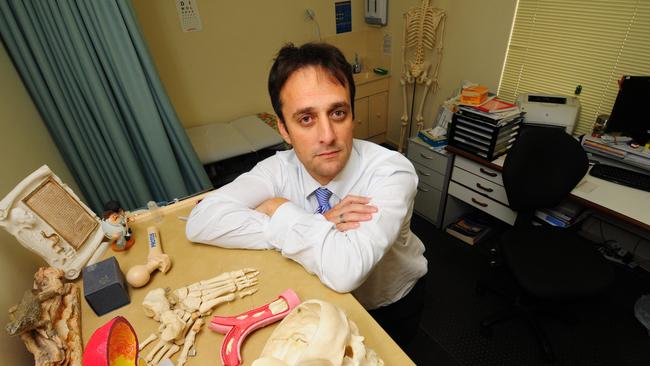Woodcroft Medical Centre faces closure as GPs cite ‘burnout’ for exodus
The loss of four GPs in 12 months has put a southern suburbs clinic at risk of closure as it struggles to find doctors to fill the vacancies.

SA News
Don't miss out on the headlines from SA News. Followed categories will be added to My News.
After the loss of four female GPs in just 12 months Woodcroft Medical Centre’s director Dr John Pakos faces the painful decision of whether to close the clinic, leaving its 5000 patient list at risk of needing to find care elsewhere.
The clinic is down to three GPs – two of them part-time – and Dr Pakos said despite advertising for a year he has not been able to fill the vacancies.
He is giving it until June to find new doctors or he will close it, putting the jobs of five nurses and eight reception staff on the line.
The GPs who have left have cited work-life balance, increased pressure and relatively poor pay compared to other medical work for moving to jobs such as locums, in palliative care and in emergency medicine.
The doctor who became a locum cited “burnout and money” for the decision, noting “I can earn as much/more money, in less time locuming.”
Dr Pakos’ own daughter Tiani Pakos, an intern who once harboured thoughts of following in her father’s footsteps, had decided against becoming a GP for similar reasons.

Dr Pakos noted once almost half of medical students indicated they wanted to go on to become GPs — this is now down under 14 per cent.
“Nobody wants to be a GP anymore,” he said. “When I started you had to fight to get in, it was more lucrative and less demanding, but now training places are vacant.
“We are in a crisis — the demands on GPs have become ridiculous and our female GPs have had enough and are going to other areas.
“Things were stable for a long time but since Covid people are reassessing their work life balance. We’ve been advertising to get doctors for a year now with no success and my frustration is boiling over.”
Dr Pakos noted a rise in mental health cases being left to GPs to manage was taking its toll, while telehealth for minor issues meant growing numbers of patients are expecting clinic GPs to manage complex and multiple issues in a short consultation.
Government paperwork is adding to the workload, while a lengthy freeze on Medicare payments cut pay.
“My own daughter is finishing as an intern and while she would love to be a GP she would rather stay in the hospital system,” Dr Pakos said.
“You take a pay cut to be a GP trainee compared to staying in the hospital system where you get things like sick leave and long service leave.”
The Woodcroft clinic, which is a teaching practice, dropped bulk billing a year ago and has a waiting list of about six weeks for a non-urgent appointment.
Dr Pakos said Australia needs to train more local doctors as a long-term solution.
“I’ve worked hard to build up this practice but if I don’t get doctors soon I will have to retrench staff, and if there are no doctors by June I fear we will have to close.”




